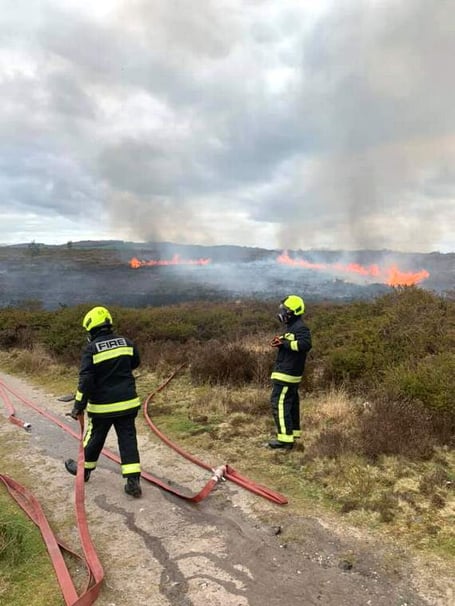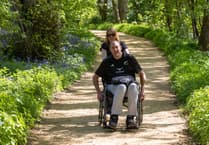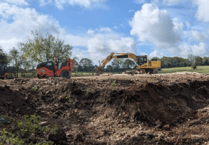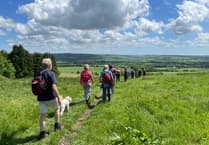The South Downs has been named the national park at the highest risk of wildfire in the UK – with a 'very high – exceptional' fire risk rating according to a new European study.
Using Statista and Met Office data, the experts at Utility Bidder have created the European Wildfire Report, which profiles UK national parks with how at risk from wildfires they are.
South Downs tops the list with an average fire risk rating of 4.5 out of 5 and a fire risk rating of 'very high – exceptional'.
The study states: "With a fire risk rating of 4.5 /5, South Downs is the National Park at risk of the most severe blazes if a wildfire should occur. Located in South East England, this National Park is made up of vast countryside and is famed for its river valleys and grassland.
"When taking into account the low rainfall and winds in the area during peak summertime, South Downs is vulnerable to extreme fires – this makes it all the more important to be mindful of our ecosystems and protect them at all costs."
It is followed by Northumberland, North York Moors, the Peak District, The Broads, Yorkshire Dales and the New Forest who all have an average fire risk rating of 4 out of 5 and a fire risk rating of 'high – exceptional'.
Pembrokeshire Coast is the park with the lowest average fire risk rating of 2 out of 5 and a fire risk rating of 'low – high'.
The study also reveals the years where wildfires have affected the UK the most, and the European countries that have suffered the biggest loss in land from wildfires between 2006 to 2022.
In terms of the total area burned by wildfires, 2019 saw the most destruction in the UK – totalling 28,754 hectares. This was followed by 2022 (20,362 hectares) and 2018 (17,689 hectares).
Recent figures have shown that 2022 was the UK’s hottest year on record, with temperatures on July 19 reaching 40.3°C.
Outside of the UK, with a 15,750 per cent increase in wildfire loss, the Czech Republic has seen the biggest change of all European countries. In 2022, it was subjected to the largest fire of its history, and as a result, 1,436 hectares of land were burned as opposed to an average of 9 from 2006 to 2021.
You can view the full research here: https://www.utilitybidder.co.uk/compare-business-energy/european-wildfire-report/
Katy Sherman, engagement officer for the South Downs National Park's Heathlands Reunited project, said: "You may have seen the devastating consequences recently of heathland wildfires in Dorset and Surrey. It’s hard not to be emotionally moved by these incidents when you consider the impact on delicate eco-systems that have taken hundreds of years to harmonise. There will inevitably be warmer, drier spells this summer and heathland sites will be at a high fire risk.
"Therefore it’s important we all take precautions to keep the fire risk to a minimum. It’s all about being environmentally responsible and understanding that you should 'leave no trace' when visiting these wonderfully diverse habitats!"
Katy shared the following tips:
- Don’t have barbecues at heathland sites, nature reserves, or woodlands. The land is often tinder dry and one spark is sometimes all it takes to start a major fire. Only use barbecues in suitable and safe areas and never leave them unattended.
- Avoid using open fires in the countryside
- Sunlight shining through glass can start large fires – take glass bottles/jars home.
- Only picnic in designated areas
- Never throw cigarette ends out of car windows – they can ruin whole fields of crops
Wildfires are very different to wildfires are controlled burns. They can be a management technique on heathland to remove mature plants, creating regeneration of new heather and grass shoots. These are only ever carried out by skilled, trained members of staff who carefully establish a burning plan.





Comments
This article has no comments yet. Be the first to leave a comment.